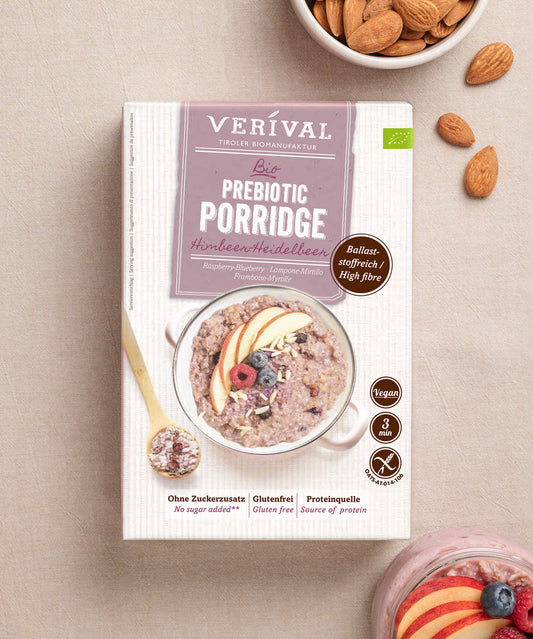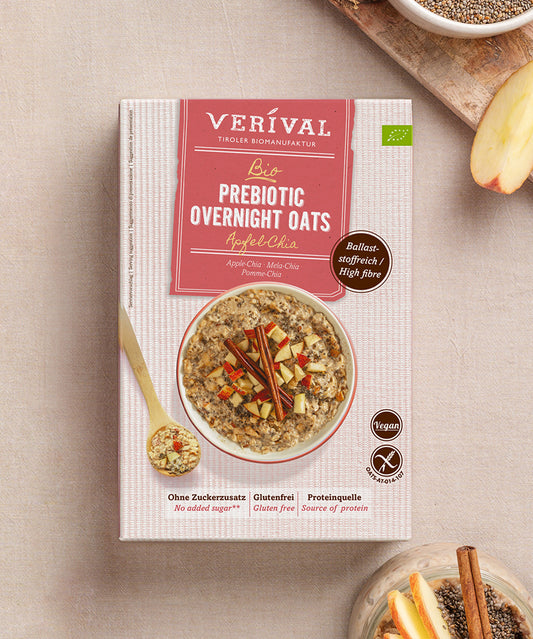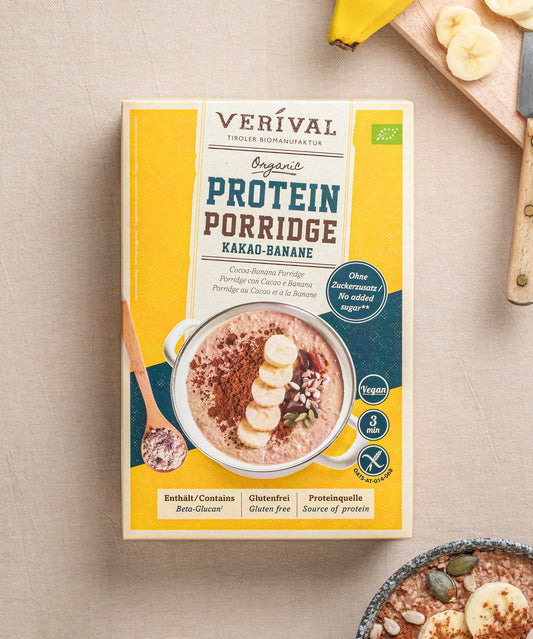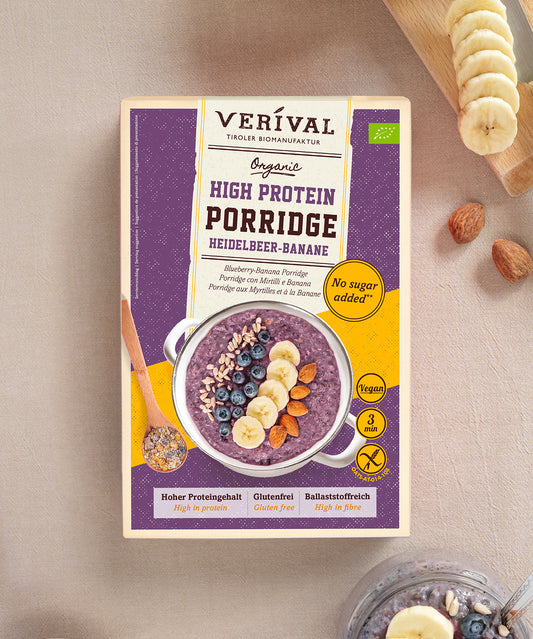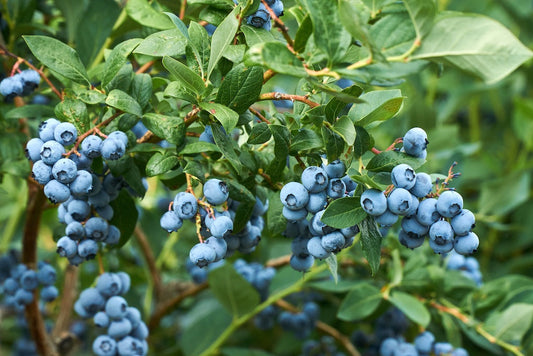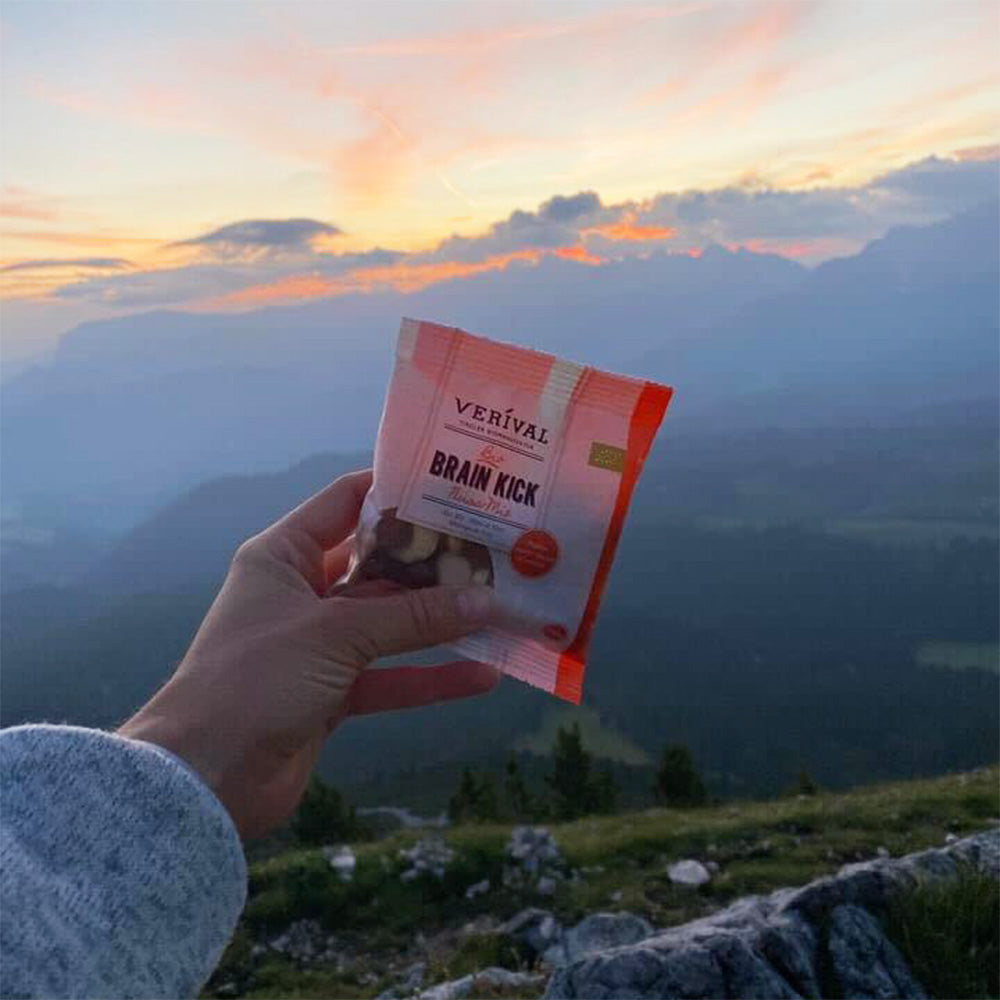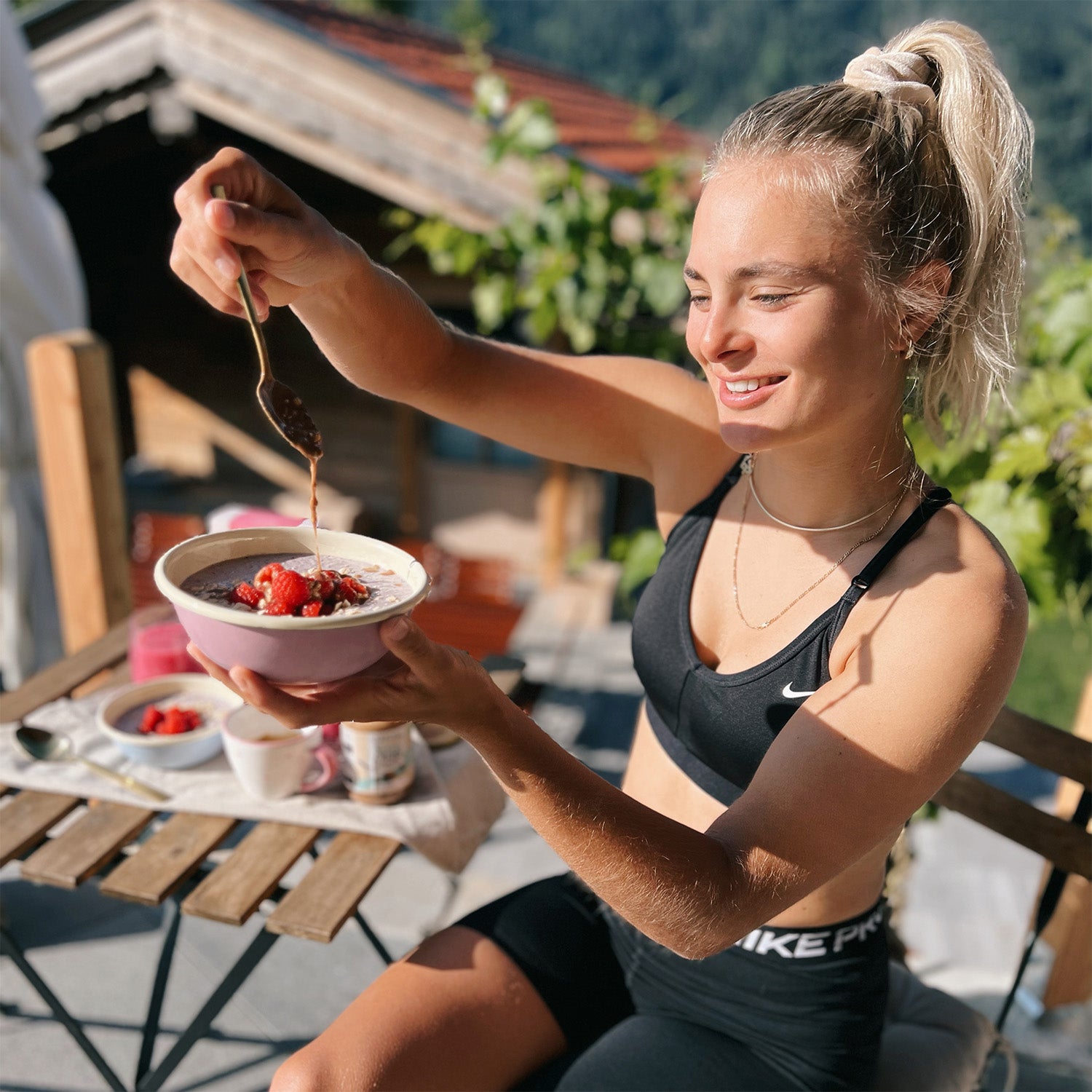Have you always wondered which berries go best with our various porridges, granolas and muesli? Here you can find out the most important facts about berries such as lingonberries (Vaccinium vitis-idaea) and their health benefits.
With our personal gardening tips, you will soon be able to admire your own lingonberry bush in your garden. Add the berries to your porridge or granola for a truly healthy breakfast.
Here are some delicious recipes with berries
What you should know about lingonberries.
Lingonberries (Vaccinium vitis idaea) belong to the heather family (Ericaceae) and to the genus of bilberries (Vaccinium myrtillus). These berries are also known by the popular names of crowberry, riffelbeere or foxberry.
The bilberry (Vaccinium myrtillus), a related berry, is mainly gathered in the wild. The lingonberries sold in shops are selected forms of the berries, which are larger and have a richer fruit set than the wild berries.
Where do lingonberries grow?
The fruits, lingonberries (Vaccinium vitis-idaea), grow as an upright to creeping dwarf shrub and can reach an average height of 30 centimetres.
The evergreen dwarf shrubs grow in dwarf shrub heaths on alpine pastures, but also in light and dry forests. They are found mainly in pine forests. The wild-growing fruits of the cowberry (moosbeere) prefer partial shade.
With a little skill, however, the cowberry (Vaccinium vitis-idaea) will also grow well in your garden. To help the fruits of the cowberry grow in your garden and bear berries, read our tips about the berries below in the article.
Are cranberries and cowberries the same thing?
It is not uncommon for people to think that lingonberries (Vaccinium vitis idaea) are the German translation of cranberry (Vaccinium macrocarpon, cranberries) and are the same berries. In terms of taste, the two berries are very similar. Both the lingonberry and the cranberry have a very sour taste due to their high content of fruit acids (benzoic acid, ascorbic acid, salicylic acid). The cranberry (also known as the large-fruited cranberry) is also often called the ‘cultural lingonberry’, which often leads to confusion – after all, it is not a lingonberry.
They also have similarities in the ingredients they contain, such as vitamin C and vitamin A, as well as fibre, potassium and iron.
The two berries are closely related, but differ in some ways. Cranberries grow to about the size of cherries, whereas lingonberries can only grow to the size of a pea. Although both berries are heather plants, cranberry plants grow along the ground and lingonberries grow upright.
Furthermore, it has been found that cranberry, or rather the juice from cranberries, can protect against certain intestinal viruses. Cranberries should not be underestimated in their properties as berries either.
When are lingonberry fruits ripe for harvesting?
The leaves of lingonberries (Vaccinium vitis idaea) are ready for picking in May or August. These berries are usually dried in partial shade for further processing, for example to make tea. The berries are ripe on average between July and September, depending on how hot it was during the summer. The berries must be bright red before they are ripe.
The health benefits of fruits like cranberries
Cranberries are not only one of the best-known superfoods, but also offer many health benefits. Cranberries are rich in antioxidants and vitamins, making them a great addition to your diet. In particular, phenolic acids and tannins have a healing effect. For example, cranberries can be used to treat inflammation of the oral mucosa or gums.
Lingonberries as a medicinal plant
The healthy ingredients are not only found in the berries, but also in the leaves. The berries are primarily used as a medicinal plant for the following diseases because of their antibacterial, anti-inflammatory and diuretic effects:
- Cystitis
- Urinary tract infections
- Pyelonephritis
- Rheumatic disorders
- Gout
The juice from the berries of the lingonberry or a tea made from the leaves of the lingonberry plant can also lower cholesterol and cleanse the blood vessels. Thanks to the abundant antioxidants they contain, the berries stimulate cell renewal in the body and can also be used as an anti-ageing agent.
Recipe for lingonberry tea
Pour 250ml of boiling water over a heaped teaspoon of lingonberry (Vaccinium vitis idaea) leaves (without the flowers), leave to steep for five minutes and enjoy. The tea made from lingonberry leaves tastes good and is particularly healthy due to its ingredients.
Recipe – smoothie bowl with cranberries
Cranberry nutrients
The berries not only taste delicious, they also contain a lot of good vitamins, such as vitamin C, vitamin B and vitamin A. In addition, the berries contain, among other things, the minerals potassium, calcium, phosphorus and magnesium.
Nutritional information: cranberry (fresh, per 100 grams)
| Cranberry | per 100 grams of cranberries |
|---|---|
| Calorific value | 147 kJ |
| Calories | 35 kcal |
| Protein | 0 g |
| Carbohydrates | 6 g |
| Fat | 0.3 g |
| Vitamins in cranberries | per 100 g cranberry |
|---|---|
| Vitamin C | 10 mg |
| Vitamin E | 1 mg |
| Vitamin B1 | 0.01 mg |
| Vitamin B2 | 0.02 mg |
| Vitamin B6 | 0.01 mg |
| Minerals in cranberries | per 100 g cranberry |
|---|---|
| Potassium | 80 mg |
| Calcium | 15 mg |
| Phosphorus | 10 mg |
| Magnesium | 6 mg |
| Salt | 5.1 mg |
| Iron | 0.5 mg |
| Zinc | 0.3 mg |
What is the best way to enjoy lingonberries?
With their organic acidity, lingonberries are only suitable for raw consumption to a limited extent. These acidic red berries taste even better when processed into lingonberry jam or berry compote. They also make a delicious jelly when combined with other fruits. A small glass of pure lingonberry juice is also a real vitality drink.
Our insider tip is to combine cranberries with our delicious Verival porridges or in Verival gluten-free muesli. The berries and oat flakes will make your healthy breakfast taste even better. Of course, you can combine cranberries with a range of other fruits, such as strawberries, blackberries, raspberries, currants or blueberries (Vaccinium).
How should I store cranberries?
Cranberries are delicate and go off very quickly. That's why you should use them as soon as possible after picking. If you want to store them for a short period, we recommend keeping them in the fridge. But first, carefully sort out any damaged fruit, as they will go mouldy very quickly otherwise.
Can I plant cranberries in my garden?
Of course, because fresh lingonberries from your own garden are known to taste best. And here you can also eat a few of the red berries raw from time to time. Usually, lingonberries grow wild in the mountains. But if you have a suitable spot in your garden, lingonberries will also grow there.
Lingonberries should be given a sunny to slightly semi-shaded spot in the garden. You should also make sure that the soil in the garden has a pH value of 5 to 6 so that the shrubs can thrive properly.
To get the right pH value, mix some needle litter or leaf compost into the hole in the garden. The planting time for the lingonberry in the garden, as seedlings, is in spring. Seeds are already planted in autumn.
Our lingonberry care tips: Plant the ground cover lingonberry shrubs 40 to 50 cm apart. Keep the lingonberry shrubs free of weeds so that the soil remains loose. Water generously during dry periods.
Since lingonberries and blueberries have the same soil and location requirements in the garden, it is advisable to plant blueberries at the same time. But be aware: the shrubs will not bear any berries in the first two years after planting in the garden. But from the third year onwards, they will bear berries twice a year.
The first harvest of berries in the garden will be in June or July, but they will be a little smaller.
The second, larger harvest of lingonberries in the garden begins at the end of August or beginning of September and, depending on the weather, lasts until October. We hope you enjoy trying your own berries soon, along with our porridges, muesli or other products such as cashews or hazelnuts.
And here's a little tip on how to use them: aside from muesli, porridge and the like, cranberries are of course an essential topping for any game dish and go perfectly with baked Camembert.





